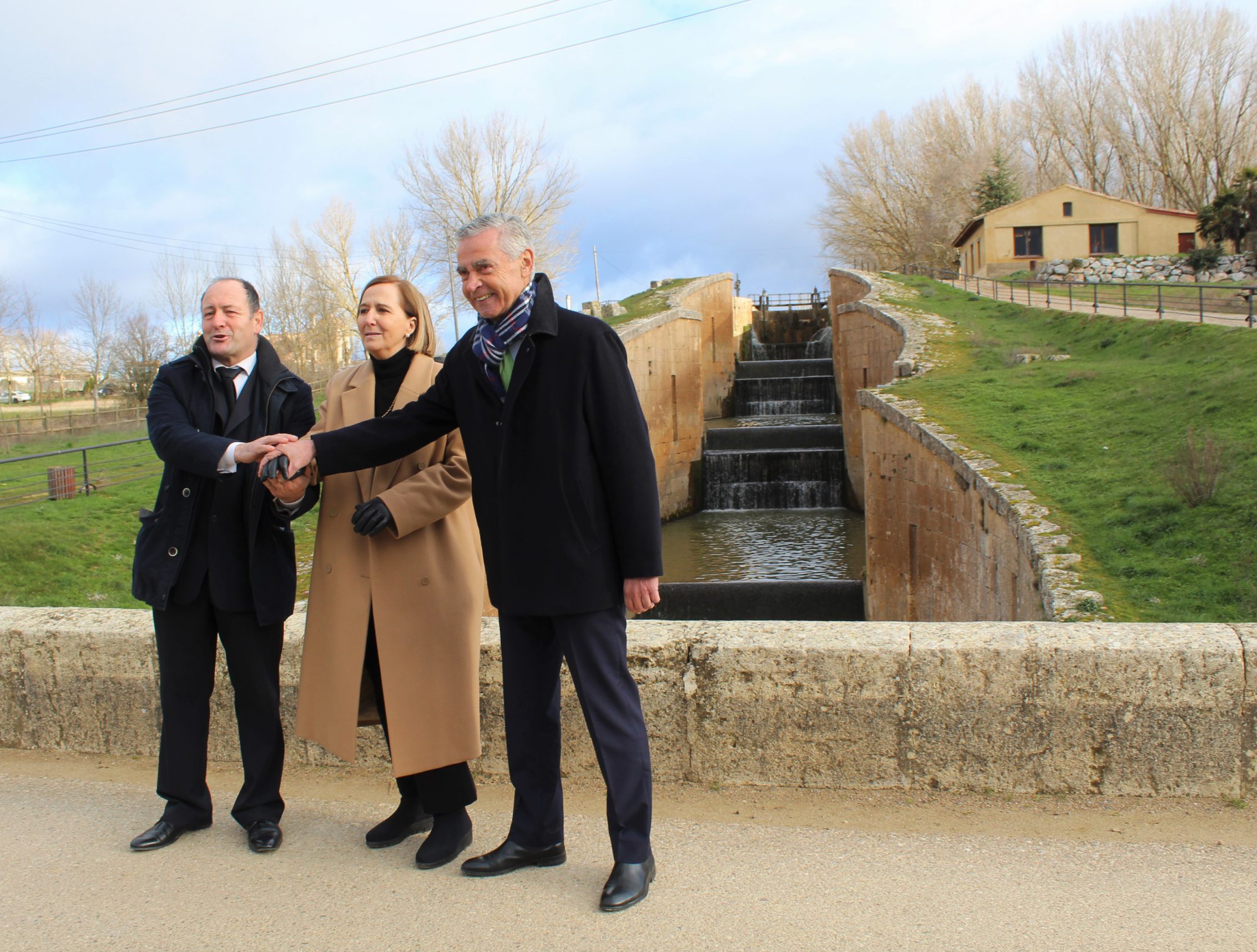The quadruple lock of the Canal de Castilla will be illuminated with new lighting
- The Duero Hydrographic Confederation, the Frómista Town Council, and Fundación Iberdrola España have joined forces to carry out this project that will contribute to sustainability by improving its energy efficiency
- The new lighting will use LED technology and will accentuate its beauty through a design adapted to the heritage values of the enclave
The Duero Hydrographic Confederation, the Frómista Town Council, and Fundación Iberdrola España have joined forces to carry out the lighting project of the quadruple lock, a tourist landmark in the town of Frómista that represents one of the most important hydraulic engineering works of the Canal de Castilla, which saves four slopes with a total height of 14.20 meters.
The president of the Duero Hydrographic Confederation (CHD), María Jesús Lafuente, the mayor of the town, Fernando Díez Mediavilla, and the president of the Fundación Iberdrola España, Fernando García, presented this morning an alliance to formalize this initiative that will contribute to the sustainability of the ornamental lighting of the lock.
The project, which is part of the Illuminations Program of Fundación Iberdrola España, will involve an investment of 30,000 euros to provide this enclave with new lighting that will accentuate its beauty through a design adapted to the lock’s heritage values.
The design contemplates the criteria of efficiency and energy saving as well as the use of LED technology: reduction of environmental light pollution and respect for the natural environment of the enclave. A very careful installation will be carried out, considering reversibility criteria.
The renovation of the lighting of this engineering work is another example of Iberdrola’s commitment to Castilla y León and its permanent aim to promote the social value of the culture, origin, and conservation of the historical and artistic heritage of the region.
A Strategy to promote the value of the Canal de Castilla
The Duero Hydrographic Confederation is currently developing the 2021-2024 Strategy, to combine the social and historical value of the Canal de Castilla with its environmental potential. A project with a global investment of more than 16 million euros.
The actions contemplated include the restoration of part of the canal’s infrastructures (hydraulic and related buildings) to improve the conservation of its rich material heritage. The project for the creation of a green corridor around the Canal is also being drafted, for an amount of 9.6 million euros, as a cultural landscape and a backbone of the territory.
The Canal de Castilla is one of the most paradigmatic hydraulic works of all those managed by the Duero Hydrographic Confederation. The Strategy implemented by the Agency contemplates actions along the 207 kilometers through which the Canal runs in the provinces of Palencia, Valladolid, and Burgos. At present, its waters irrigate more than 21,000 hectares and supply 400,000 inhabitants in the provinces of Valladolid and Palencia.
Iberdrola, with the promotion of art and culture
One of Iberdrola’s main areas of action, through its foundation in Spain, focuses on the care, conservation, and enhancement of historical and artistic wealth.
The main objective of the Illumination Program is to develop interventions in unique buildings to install or improve their interior and/or exterior lighting systems to contribute to the enhancement of heritage.
Since 2011, the volume of investment allocated to the Illumination Program has amounted to more than 3 million euros and has involved improvements of over 40 monuments in Spain, including the Cathedral of Avila, the interior of the Cathedral of Palencia and the New Cathedral of Salamanca, the church of San Hipólito el Real in Palencia, the historic Roman Bridge of Alcántara in Cáceres, the façade of the Congress of Deputies, the Palace of the Supreme Court in Madrid, the Cathedral of Santiago de Compostela and the Cathedral of Sigüenza.


